Introduction
As the new flagship model in the range the Pentax K-3 resembles previous iterations in terms of robust and weatherproof build, control layout and high-end features. These include a 0.95x magnification viewfinder with a 100-percent field of view and a 1/8000th sec top shutter speed (albeit with a still somewhat low 1/180th sec flash sync). The K-3 also has a 27-point AF system (comprising of 25 cross-type sensors with sensitivity to an unusually low -3 Ev, twin SD slots and a continuous burst mode of up to 8.3 fps (without an additional battery pack).
Together with a 24-Mpix APS-C CMOS sensor, the Pentax K-3 is one of the few professional-level cameras offered in this format with this high pixel count, outdoing both the Nikon D300s and the Canon EOS 7D but on a par with the Sony A77 and NEX-7.
Like the K5-IIs model before it, the new Pentax K-3 has no optical low pass filter. Instead it is the first of its kind to feature a selectable anti-aliasing mechanism. This new system adopts the camera’s built-in stabilized sensor platform to apply additional microscopic vibration at sub-pixel level thereby slightly blurring the image and simulating the effect of an optical low-pass filter. The user can choose between two intensities to reduce the effects of moiré, or to switch it off completely for maximum clarity and resolution.
As with its predecessors, the K-3 boasts one the largest lens ranges specifically designed for the smaller APS-C sensor. The range consists of affordably priced DA zooms and primes, high-grade ultrasonic equipped DA* models and highly compact DA Limited primes.
The Pentax lens range also consists of full-frame digital optimized D FA models and an earlier series of FA lenses designed originally for use with old Pentax film cameras (they’ve yet to introduce a full-frame DSLR).
The older FA series also encompasses the FA Limited models, which, like the DA Limited models, are highly coveted for their attractive rendering, or ‘drawing style’, perhaps even more so.
The result is an appealing and unsurpassed range of primes and zooms designed for DSLRs using APS-C format sensors. With no AA filter and a pixel dense 24-Mpix sensor, the Pentax K-3 is the most demanding model yet and will highlight any deficiencies in lens performance.
We’ve tested the Pentax K-3 with over 30 different lens models, ranging in focal length from 8mm (equivalent to 12mm in 35mm format) with the 8-16mm f4.5-5.6 DC HSM model from Sigma up to 300mm (450mm equivalent) with the Pentax smc DA* 300mm F4 ED (IF) SDM lens.
We’ve also assessed several of the DA and DA* models, including the new smc DA 18-270mm f3.5-6.3 ED SDM, as well as three of the five new Pentax HD Limited series. We’ve also evaluated the new Sigma 35mm f/1.4 DG HSM Art-series model and the older but modestly priced ($499) Tamron SP AF 28-75mm f/2.8 XR (42-113mm equivalent) model.
Please note while we’ve yet to appraise the FA Limited models – Pentax 31mm f/1.8, 43mm f/1.9, 77mm f/1.8 models or the DA* 50-135mm f2.8 and 60-250mm f/4.0 ED (IF) SDM zooms. However, we will be covering these important models in the future and will update the database for additional comparisons.
Although a full-frame lens and the equivalent to a 50mm on the Pentax-K-3, the Sigma 35mm f/1.4 DG HSM A is the best performing prime overall in our database (on the K-3). It’s a big heavy lens on the Pentax-K-3 but the build and image quality is very high. Peak sharpness is measured at 16P-Mpix, 3P-Mpix higher than the next measured model (the DA Limited 35mm f2.8 Macro –either the new HD model or earlier smc version).
 |
 |
 |
 |
| Sigma 35mm F1.4 DG HSM A Pentax | 899 | 27 | 16 |
| Pentax smc DA Star 55mm F1.4 SDM | 640 | 27 | 11 |
| Pentax smc DA 50mm f1.8 | 249 | 25 | 12 |
| Pentax smc DA 35mm F2.8 Macro Limited | 700 | 22 | 13 |
| Pentax HD DA 35mm F2.8 Macro Limited | 750 | 22 | 13 |
| Pentax smc DA 35mm F2.4 AL | 220 | 22 | 11 |
| Pentax smc DA 70mm F2.4 Limited | 545 | 22 | 11 |
| Pentax smc D FA MACRO 100mm F2.8 WR | 589 | 22 | 10 |
| Pentax smc PENTAX D FA 50mm F2.8 Macro | 444 | 21 | 12 |
| Pentax smc FA 50mm F1.4 | 450 | 21 | 11 |
| Pentax smc DA 40mm f2.8 XS | 250 | 20 | 10 |
| Pentax HD DA 40mm F2.8 Limited | 550 | 19 | 9 |
| Pentax HD DA 21mm F3.2 AL Limited | 700 | 18 | 11 |
| Pentax smc DA 40mm F2.8 Limited | 360 | 18 | 9 |
| Pentax smc DA Star 300mm F4 ED (IF) SDM | 1400 | 17 | 9 |
| Pentax smc DA Star 200mm F2.8 ED (IF) SDM | 1200 | 17 | 8 |
| Pentax smc DA 21mm F3.2 AL Limited | 650 | 16 | 11 |
| Pentax smc PENTAX DA 14mm F2.8 | 575 | 15 | 8 |
| Pentax smc DA 15mm F4 ED AL Limited | 510 | 14 | 9 |
| Pentax HD DA 15mm F4 ED AL Limited | 700 | 14 | 8 |
With the same DxOMark score of 27 points and technically occupying joint first place, albeit with a lower peak sharpness score is the Pentax smc DA* 55mm f1.4 SDM. As the equivalent to a 85mm on the K-3 it’s well corrected optically, and an excellent performer, though at $249 the more modestly priced APS-C only DA 50mm f1.8 isn’t quite as good a performer though with marginally higher peak sharpness it may appear to skew the ranking slightly when measured on the Pentax K-3.
Although we’ve not had the opportunity to analyze either the 16-Mpix K-5 II or the K-5 IIs (sans OLPF), we can compare the K-3 with the earlier K-5 (from 2010), which had related sensor. Although the overall pixel count increased 50% from 16.3-Mpix to 24.3-Mpix, the linear increase is much lower at around 22% – however, bearing in mind the Pentax K-3 has no OLPF increases in sharpness should be significant, especially with the right lenses.
Sigma’s high-grade models continue to perform well with the constant aperture ultrasonic focusing 17-50mm f2.8 EX DC HSM sitting in the top slot out of those tested, and that includes Pentax’s DA* 16-50mm f2.8 and the more modest DA 16-45mm f4, albeit those models coming in second and third place respectively. The Sigma has the highest measured peak sharpness and it’s the best corrected of the 14 models in our database tested on the K-3.
If the 16-45mm and 16-50mm models aren’t quite wide enough, as an 18-36mm equivalent, the Pentax 12-24mm f4 ED AL (IF) is in joint third place with a DxOMark score of 15 and a respectable 10P-Mpix sharpness score. With a 13.8x zoom ratio, the $499 27-375mm equivalent 18-250mm performs well if it can still be found – it has recently been replaced by the 18-270mm f3.5-6.3, which although upgraded with an ultrasonic type AF motor also comes with a hefty 50% premium in price ($749) together with a slight hit in optical performance.
We’re working hard on expanding the range of Pentax lenses in our database, but we’re interested to know if there are certain models that you would like to see reviewed first. Please leave your recommendations in the comments section below.


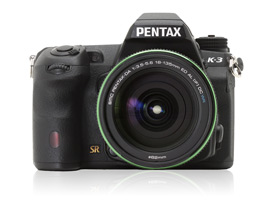
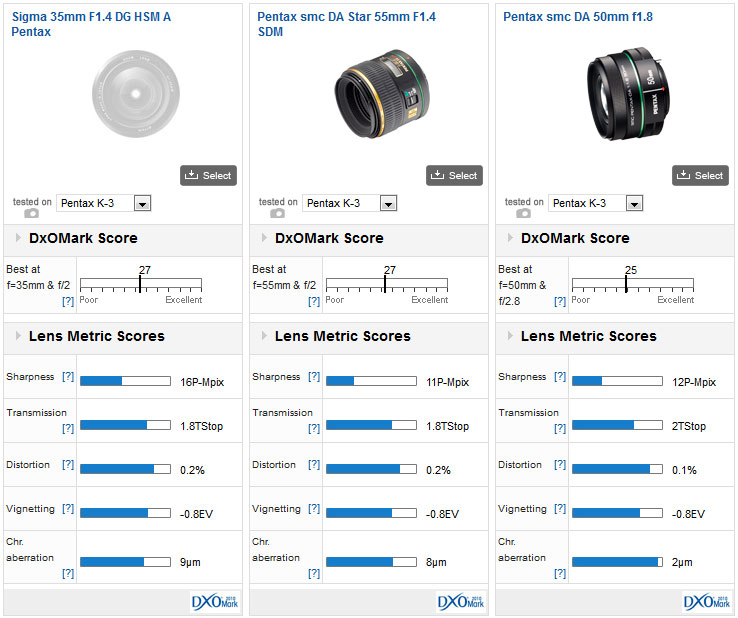
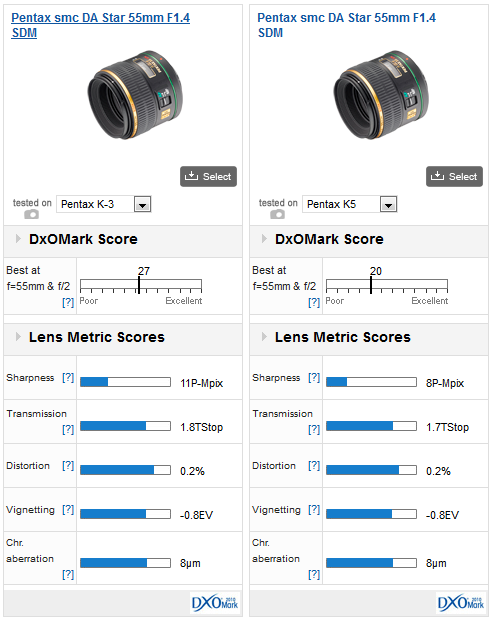
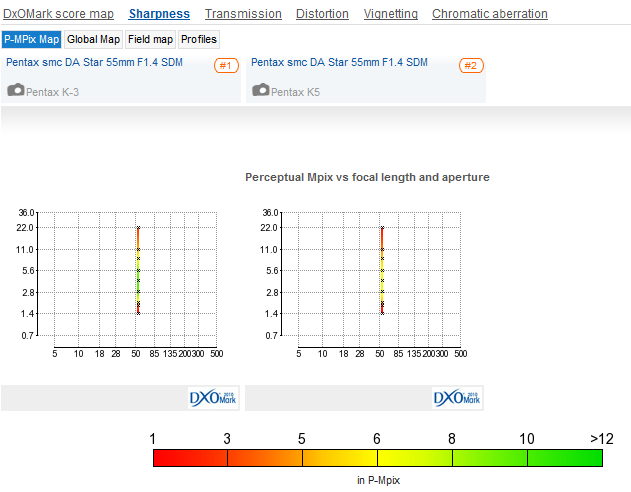
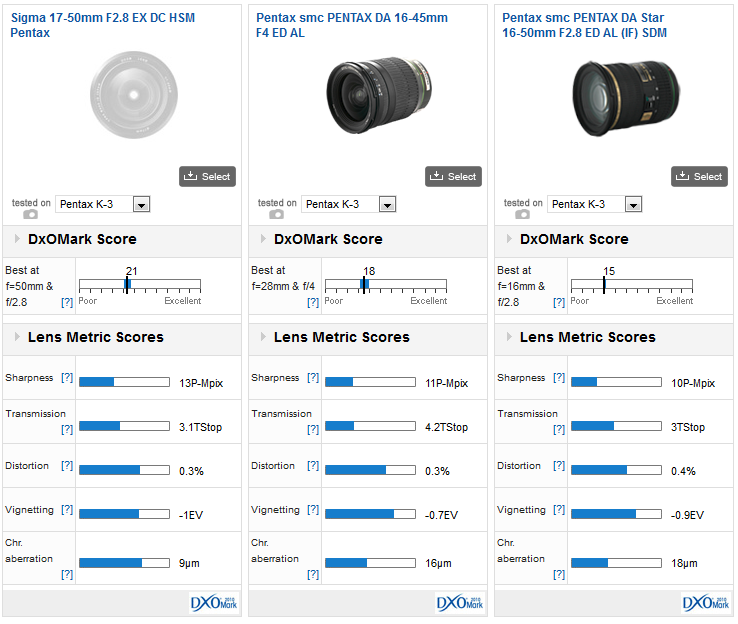
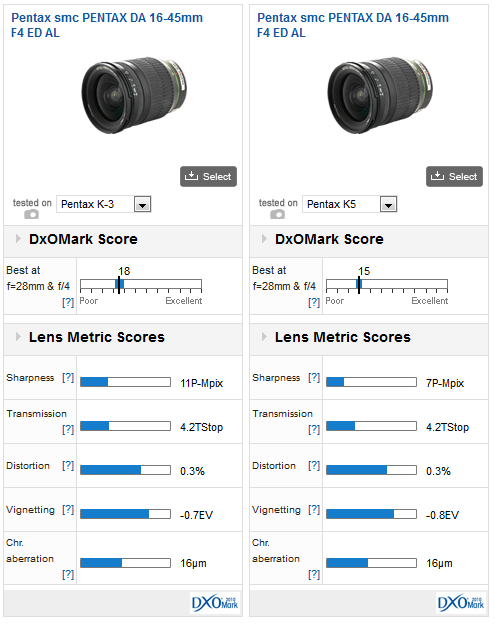
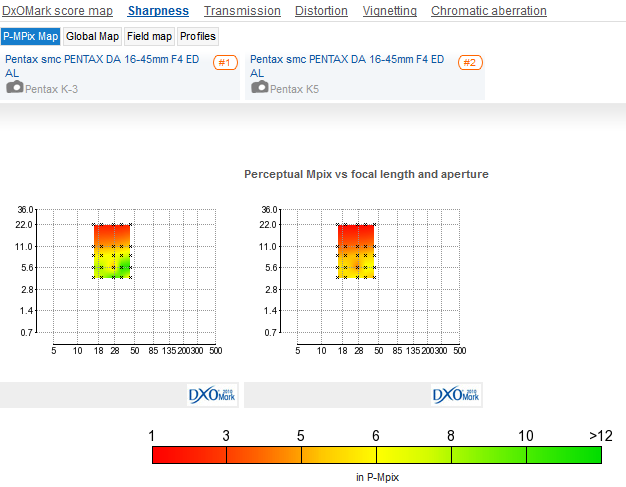
DXOMARK encourages its readers to share comments on the articles. To read or post comments, Disqus cookies are required. Change your Cookies Preferences and read more about our Comment Policy.